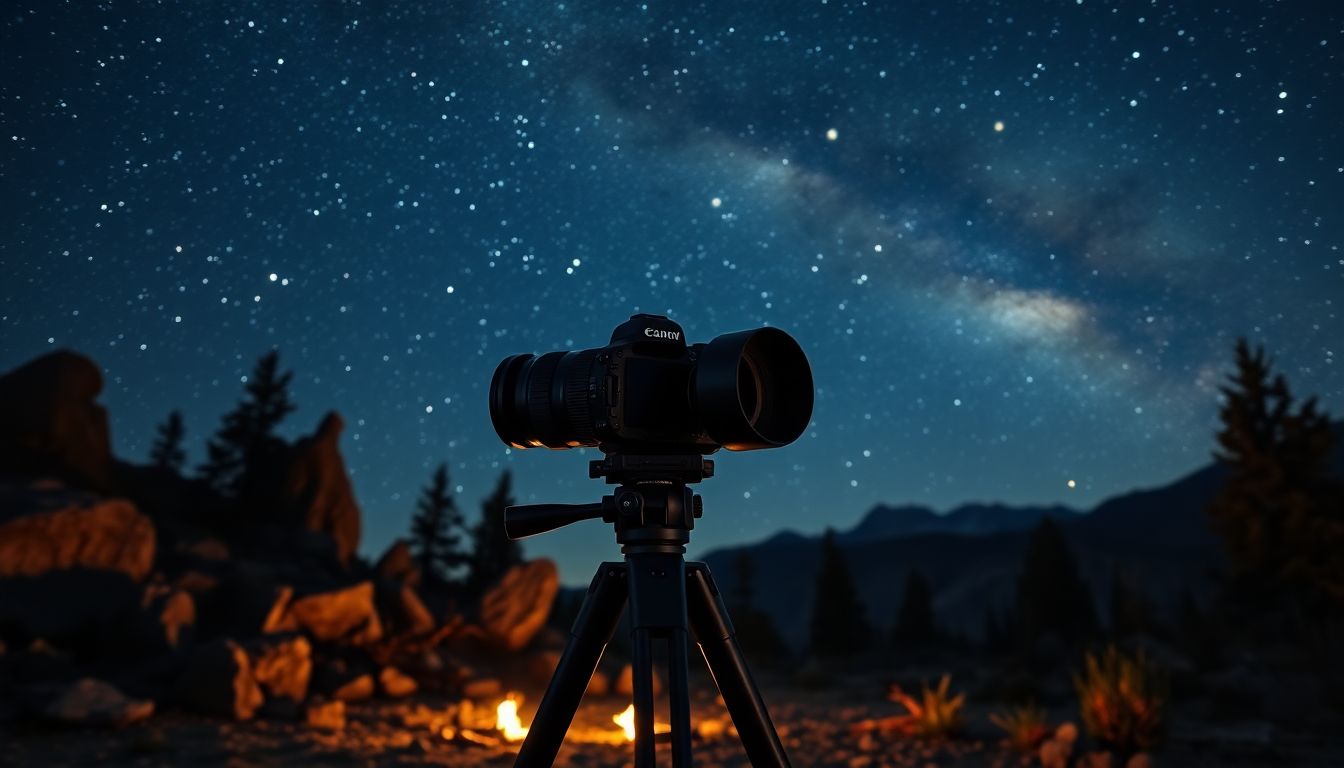
Top 5 Canon Lenses to Capture Stars and Planets Easily
Introduction
Astrophotography is becoming more popular. Both amateurs and pros love capturing the night sky. But a great photo starts with the right camera gear. Choosing the right lens makes all the difference. In this guide, we list the best Canon lenses for shooting stars and planets. Plus, we share key features and tips for perfect night sky photos.
Why Choosing the Right Lens Matters for Astrophotography
Your lens affects how bright, clear, and sharp your star photos turn out. A good lens has a wide field of view, great light gathering, and sharp edges. Night sky photography has grown by over 40% in recent years, showing more people want to take star shots.
Imagine you try different lenses: the zoom lens may give you detailed planets, but it could be blurry at the edges. A wide-angle lens might make the Milky Way look huge but lose some detail. The right lens gives you crisp, clear images, like turning a faint star into a sharp pinprick of light.
Main Features to Consider When Choosing a Lens for Night Sky Photography
- Fast Aperture (f/1.4 to f/2.8): A wide opening lets in more light. This is crucial for capturing stars and faint objects.
- Focal Length: Wide-angle lenses (14-35mm) are perfect for capturing entire starry skies or the Milky Way. Telephoto lenses (70-200mm, 85mm) zoom in on planets and distant objects.
- Optical Quality and Sharpness: A clear, sharp image is vital for detail. Look for lenses known for little distortion and good edge-to-edge sharpness.
- Low Distortion & Chromatic Aberration: Minimized distortion keeps stars round. Less chromatic aberration means colors stay true when shooting bright planets.
- Compatibility: Make sure your lens works with your Canon camera, whether full-frame or crop sensor.
Top 5 Canon Lenses for Capturing Stars and Planets
Canon RF 14-35mm F4L IS USM
- Best for wide-field astrophotography
- Features: Stabilized images, versatile zoom, and lightweight design. Perfect for beginners wanting broad night sky shots.
- Example: Stunning photos of the Milky Way stretching across the sky. The lens keeps stars sharp from edge to edge.
Canon RF 15-35mm F2.8L IS USM
- Ideal for detailed nightscapes and starry vistas
- Features: A bright f/2.8 aperture helps gather more light. It also offers image stabilization and excellent build quality.
- Expert opinion: “A top choice for serious astrophotographers, blending quality and flexibility.”
Canon EF 70-200mm f/2.8L IS III USM (for DSLR users)
- Great for planets and deep space objects
- Features: Telephoto length with a fast f/2.8 aperture. It captures distant objects with bright, sharp images.
- Tips: Use on a sturdy tripod paired with a remote shutter to avoid shake. Best for planetary details.
Canon RF 85mm F1.2L USM DS
- Amazing for planets and star clusters
- Features: Ultra-fast aperture creates a dreamy background blur and crisp planetary images.
- Example: Close-up detailed images of Venus or Saturn, showing vivid structures.
Canon RF 24mm F1.4L IS USM
- Perfect for starry landscapes and Milky Way shots
- Features: Sharp across the entire frame, excellent in low light. Use long exposures with a tripod for best results.
- Advice: Combine this lens with stacking techniques for stunning star trails.
Techniques and Tips for Astrophotography with Canon Lenses
Start with the right settings:
- Use wide-open aperture (like f/1.4 or f/2.8).
- Keep ISO between 1600 and 3200.
- Set shutter speeds based on focal length. For wide lenses, 20-30 seconds is good. Adjust for longer on telephoto.
Manual focus is key — focus on a bright star or distant light.
Use a remote shutter or timer to avoid shake.
Long exposure and stacking help clear up noise and add detail.
Post-processing makes your images pop by adjusting contrast and brightness.
Conclusion
Picking the best Canon lens makes your night sky photos clearer and more detailed. Wide-angle lenses like the RF 14-35mm are great for capturing vast star fields. Telephoto options, such as the EF 70-200mm, zoom in on planets or distant objects with precision. Understanding these lenses’ features and practicing proper techniques turns amateur shots into stunning images.
Ready to explore the night sky? Grab one of these lenses, try different settings, and share your stellar results. Happy shooting!

